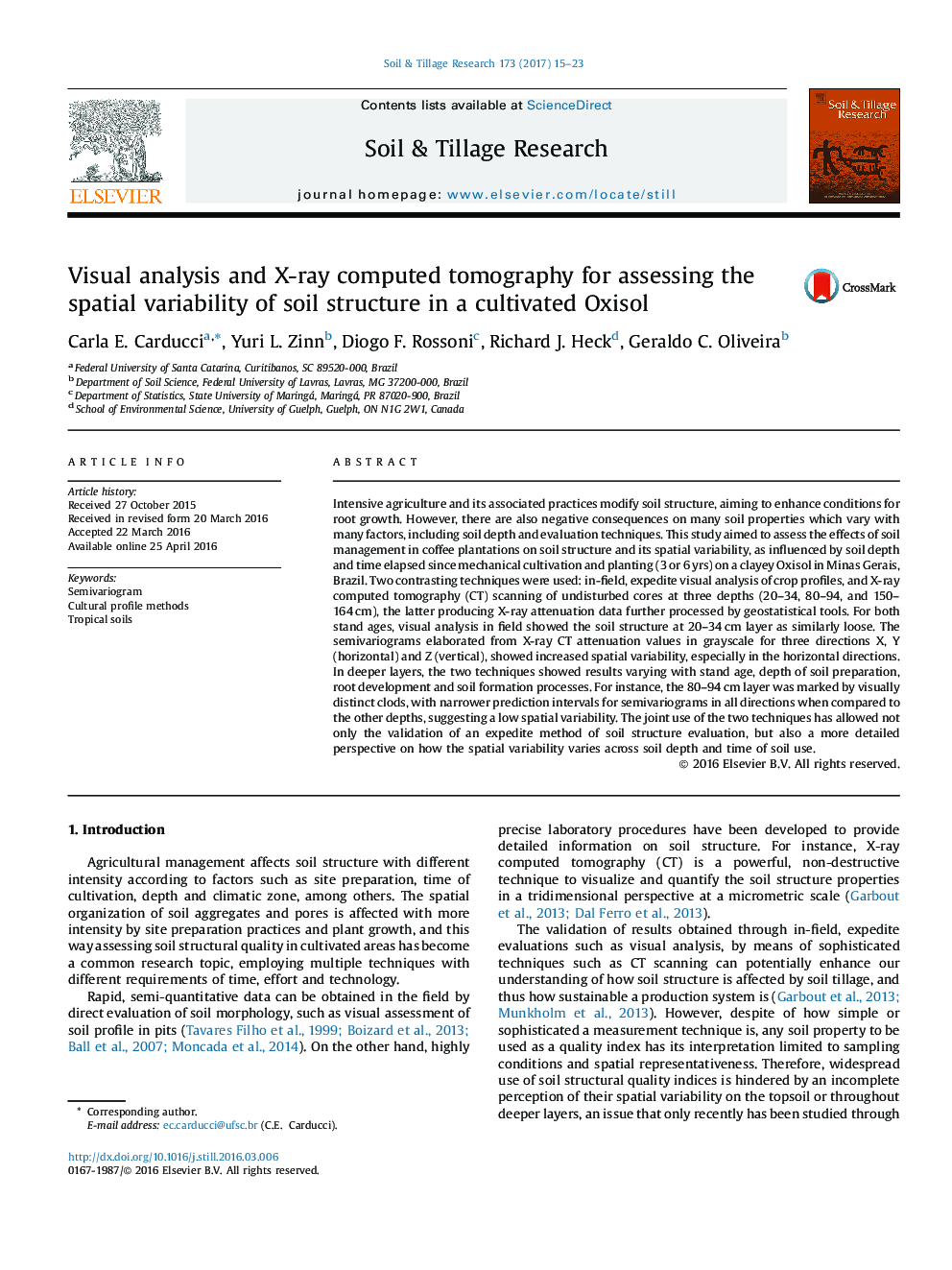| کد مقاله | کد نشریه | سال انتشار | مقاله انگلیسی | نسخه تمام متن |
|---|---|---|---|---|
| 4927481 | 1431830 | 2017 | 9 صفحه PDF | دانلود رایگان |
- Soil structural changes were visible in coffee stands, after 3 and 6Â years.
- X-ray CT scan supported conclusions by visual analysis.
- The greater variability of granular structure occurred in horizontal directions.
- Spatial analysis is a powerful tool to detect the effects of soil tillage systems.
Intensive agriculture and its associated practices modify soil structure, aiming to enhance conditions for root growth. However, there are also negative consequences on many soil properties which vary with many factors, including soil depth and evaluation techniques. This study aimed to assess the effects of soil management in coffee plantations on soil structure and its spatial variability, as influenced by soil depth and time elapsed since mechanical cultivation and planting (3 or 6Â yrs) on a clayey Oxisol in Minas Gerais, Brazil. Two contrasting techniques were used: in-field, expedite visual analysis of crop profiles, and X-ray computed tomography (CT) scanning of undisturbed cores at three depths (20-34, 80-94, and 150-164Â cm), the latter producing X-ray attenuation data further processed by geostatistical tools. For both stand ages, visual analysis in field showed the soil structure at 20-34Â cm layer as similarly loose. The semivariograms elaborated from X-ray CT attenuation values in grayscale for three directions X, Y (horizontal) and Z (vertical), showed increased spatial variability, especially in the horizontal directions. In deeper layers, the two techniques showed results varying with stand age, depth of soil preparation, root development and soil formation processes. For instance, the 80-94Â cm layer was marked by visually distinct clods, with narrower prediction intervals for semivariograms in all directions when compared to the other depths, suggesting a low spatial variability. The joint use of the two techniques has allowed not only the validation of an expedite method of soil structure evaluation, but also a more detailed perspective on how the spatial variability varies across soil depth and time of soil use.
Journal: Soil and Tillage Research - Volume 173, November 2017, Pages 15-23
